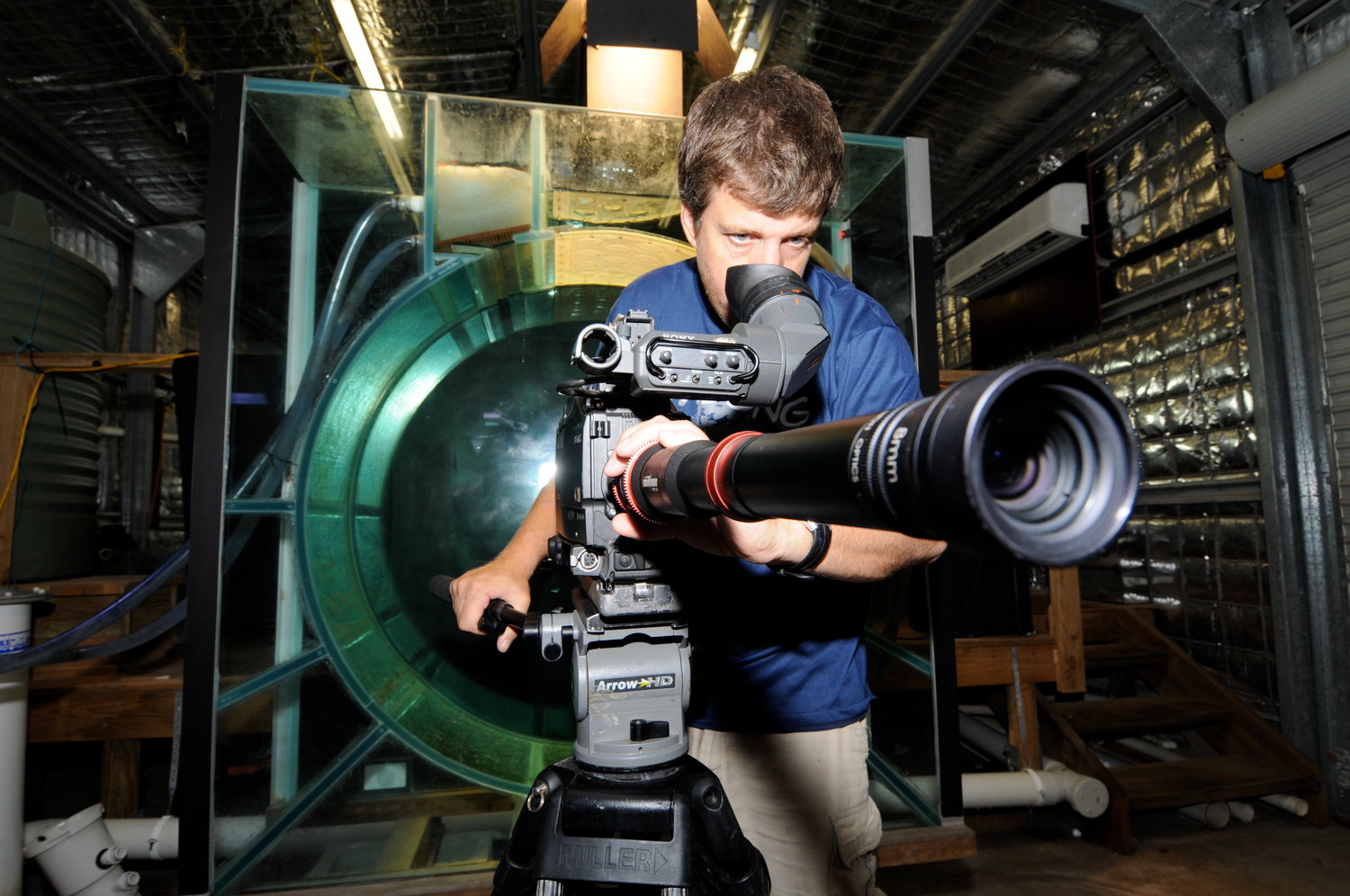The best things in life often come unscripted and unplanned, brought upon by sweet serendipitous moments that take you by surprise. While visiting Cairns Marine earlier this month, we were treated to an enchanting encounter with one of documentary filmmaking’s biggest names. Case in point, our rendezvous with Richard Fitzpatrick in Australia.

Richard from biopixel is a world renowned cinematographer specialising in 6K and high speed filming. Specializing in complex behavioural sequences, Richard is responsible for shooting some of the most iconic and ground breaking scenes featured in numerous documentaries for clients such as BBC, National Geography and Discovery Channel. His innate ability to capture these moments in stunning resolution despite potential tumultuous environments has won him an Emmy in 2010.

Richard is a close family friend of the Squire’s, and while visiting Cairns last month we got a chance to exchange a few words and take a look at how some of nature’s biggest moments are captured on film. Having worked with icons such as Sir. David Attenborough, and with numerous years of experience under his belt, Richard is one of the leading authorities in his field. Aside from his work with cameras and filmmaking, he’s also a qualified marine biologist currently doing research in sharks.

Part of Richard’s job as a documentary filmmaker involves shooting intricate behavioural ballets that are, in the wild, only observable with great amount of luck and perhaps cosmic, divine intervention. As such, these events are nearly impossible to capture in situ, and replicating them in a studio set up may be the only way anyone will ever get a chance to observe these moments.
Did a metaphorical light bulb just appear above your head? Good. Did you know that a significant portion of a documentary involves scenes shot in a studio? Camera magic, detailed replication and careful editing can seamlessly blend these scenes with those shot in the wild to produce a film indecipherable to the casual observer.
While touring Richard’s studio, we got a chance to see how some of these sequences were captured and carried out. These studio set ups range from simple glass quarters to elaborate replicas. The video above shows you a glimpse at how some of these simpler shots are done. Sequences such as feeding, spawning, birthing and other time sensitive processes are done, to much amazement, in-house. Because primary scenes are shot in the field, the filmmakers have an exact idea of the environmental conditions. This allows them to recreate the scenes in studio down to the minutest of details such as water turbidity, lighting, flow and even presence of other naturally occurring animals.


This of course, comes with great patience and research. To replicate the scenes well, the studio set ups have to be matured with corals and fish grown in the most natural way possible. Even the correct species found in the same habitat have to be used. You wouldn’t want a Hawaiian species making a cameo for a Great Barrier Reef feeding sequence. Easy as this may seem, a great deal of patience and time is still needed. Some scenes such as the iconic seahorse birthing scene may require months, if not years of waiting. This, of course, is still a better option than say, chancing upon a birthing seahorse in the wild. The recreation set ups allow filming for these rare and otherwise impossible moments in situ.
The film above, for example, combines scenes shot from both wild and in-studio to show some unique behavioural sequences of a Tasselled Wobbegong. Not only does this allow for intimate filming, it also gives filmmakers an opportunity to work in adverse weather conditions. When tropical storms make working in the field impossible, the studio acts as an evergreen alternative.


With over 20 years of filmmaking, Richard and biopixel have amassed quite the collection of scenes. Many of these are scientific firsts that have never been seen anywhere before. As such, documentary filmmakers are in a way, pushing the envelope of natural history and scientific discovery. A perfect example of science and art in harmonic unison.
A big thanks to Richard and Hannah for giving us an insight into the world of documentary filmmaking. For more of biopixel and some of their stunning cinematic scenes, check out their website, twitter, instagram and Facebook page.




